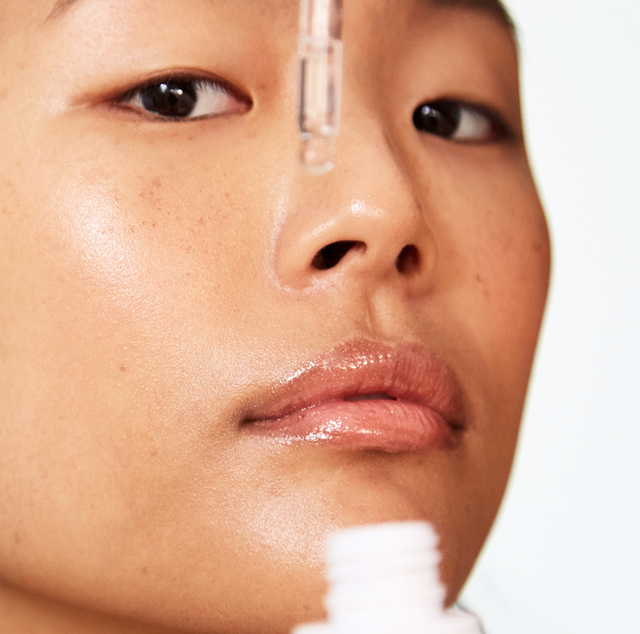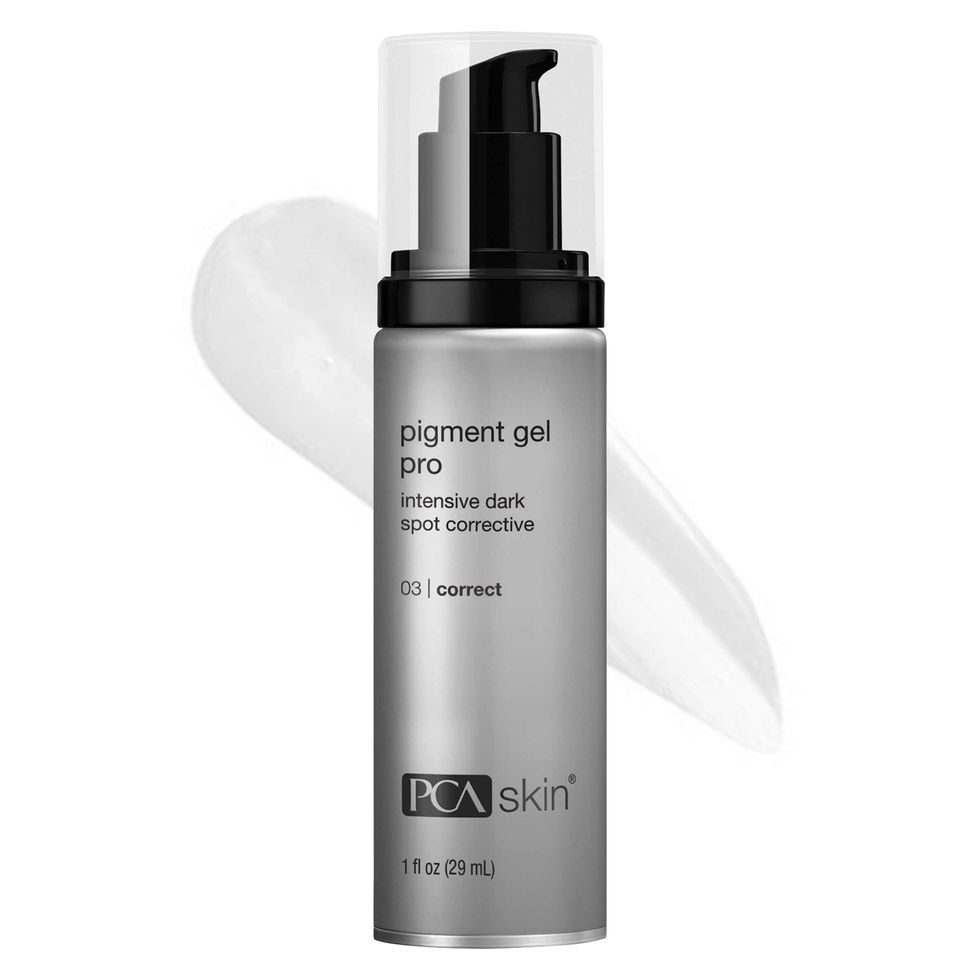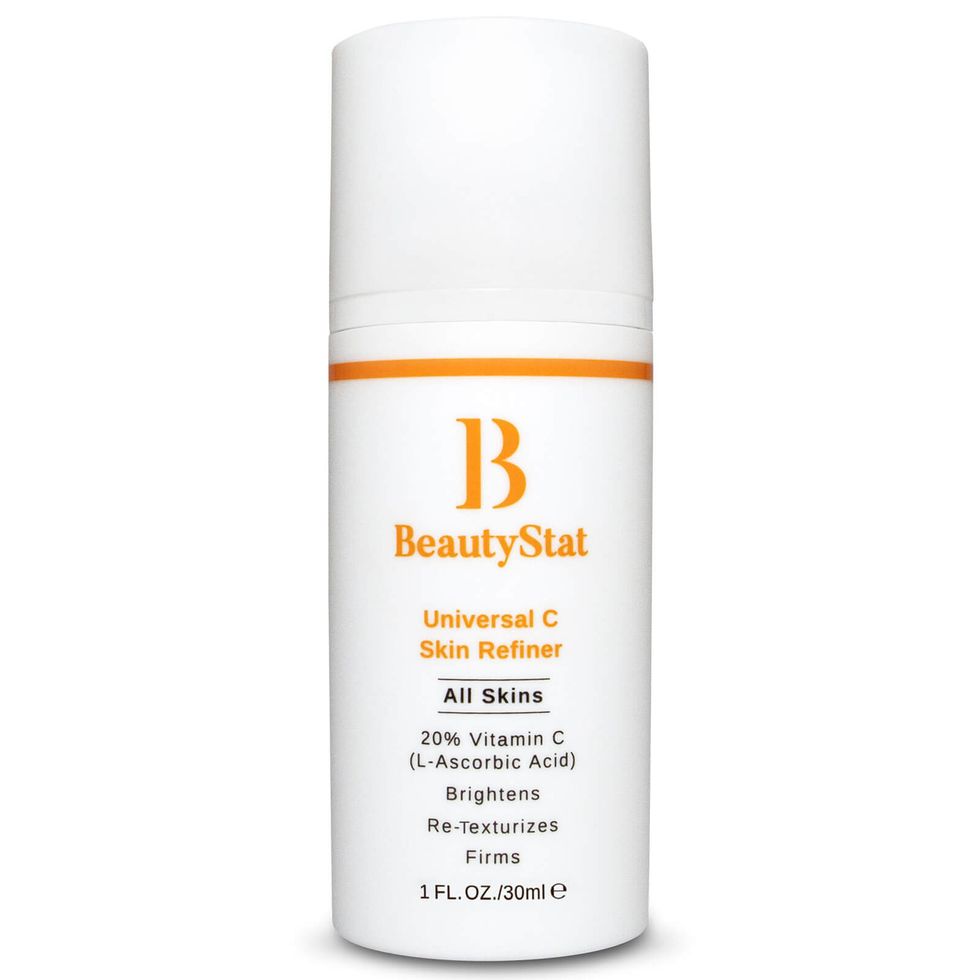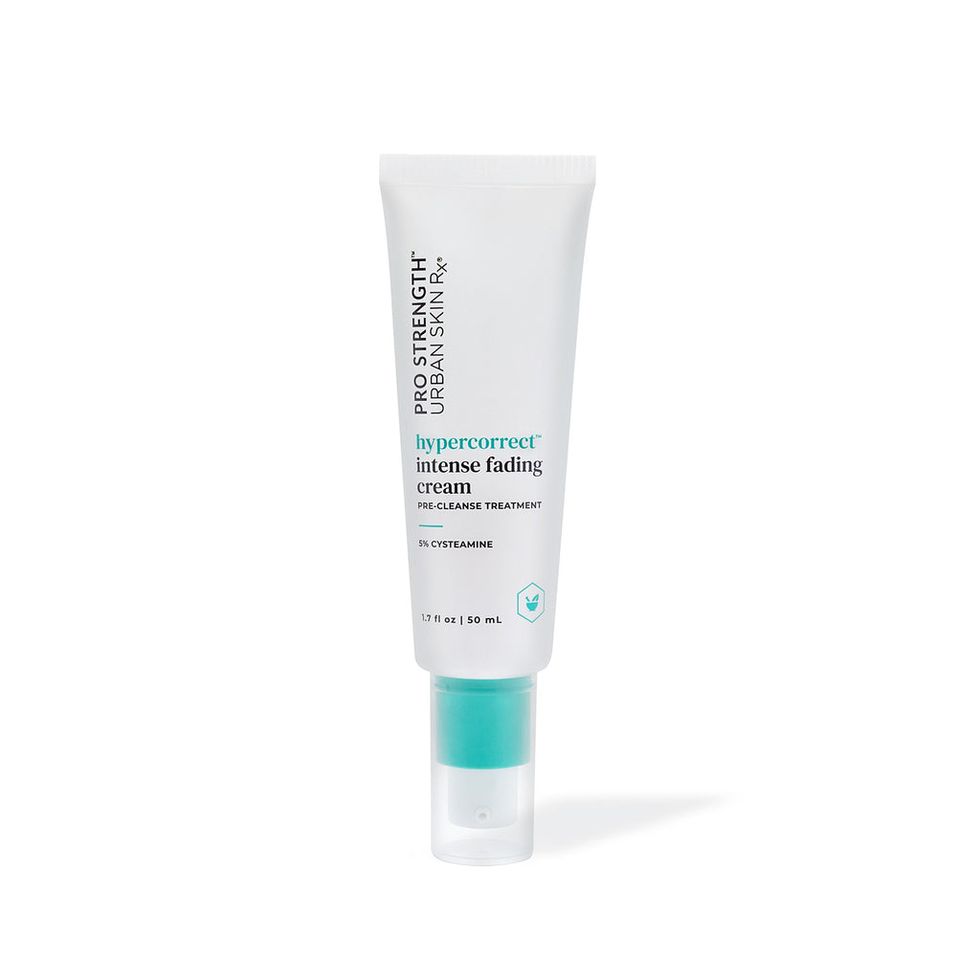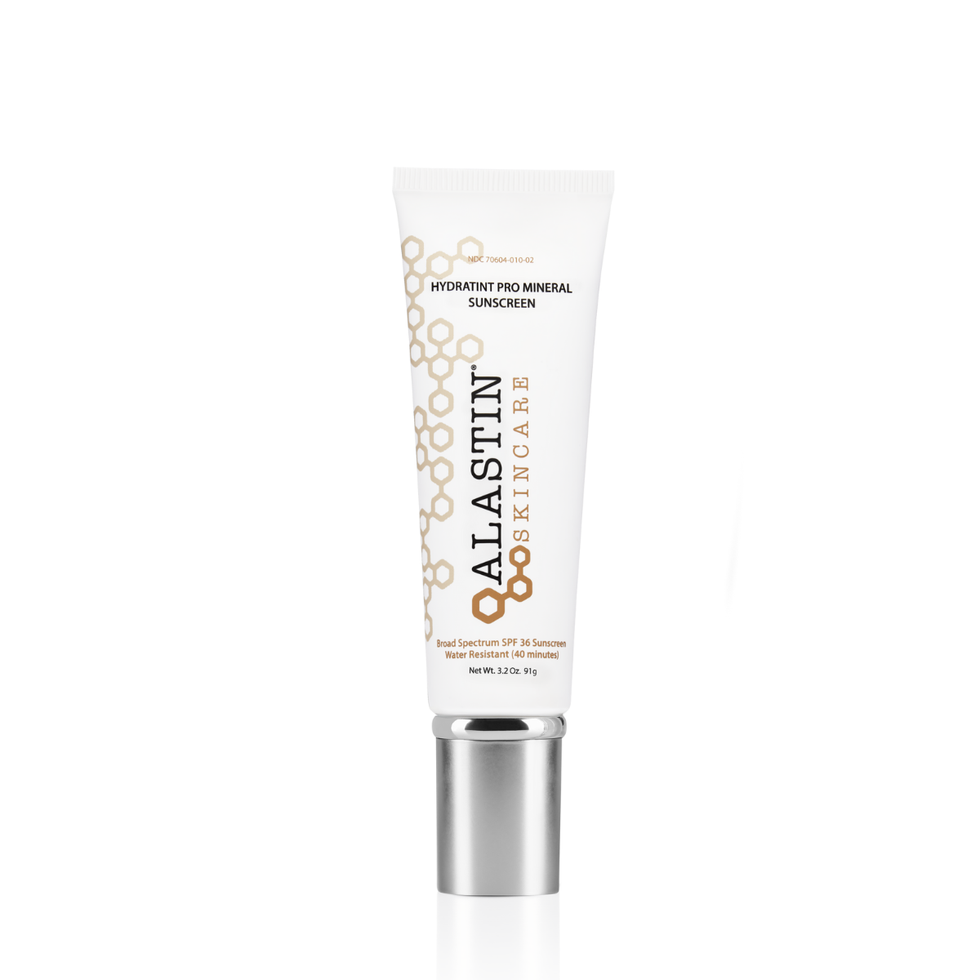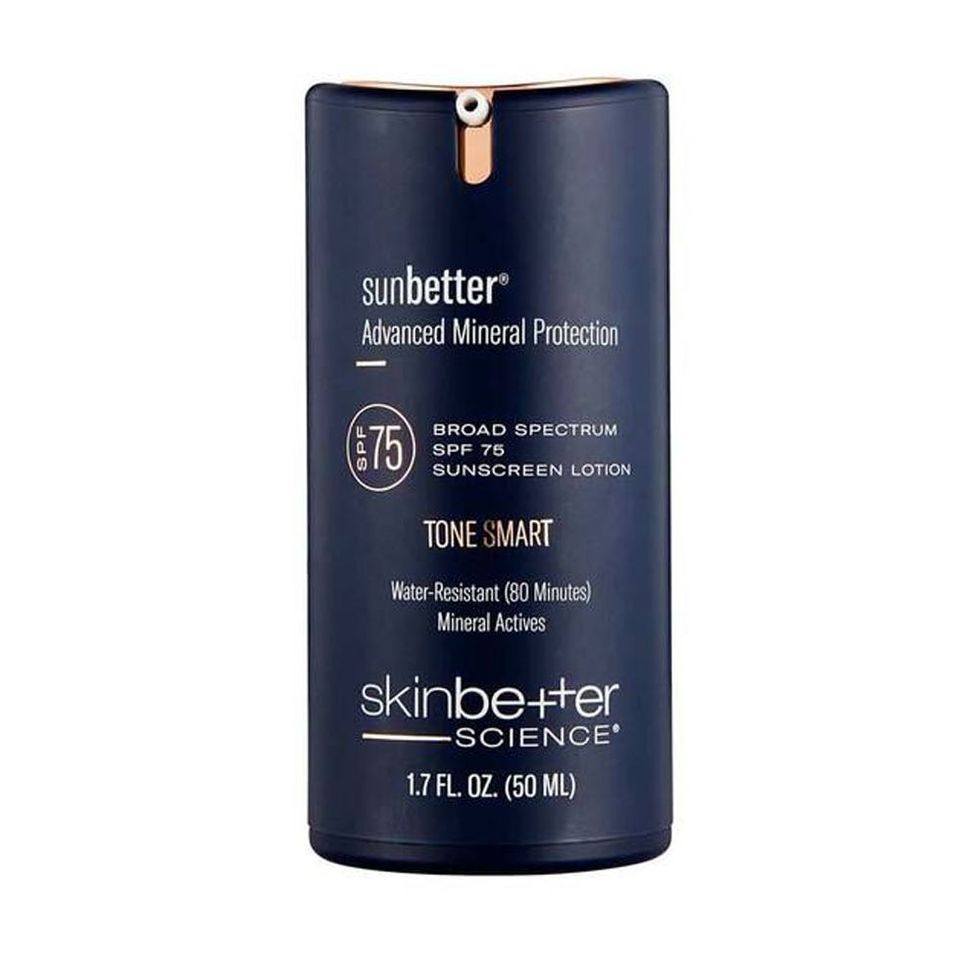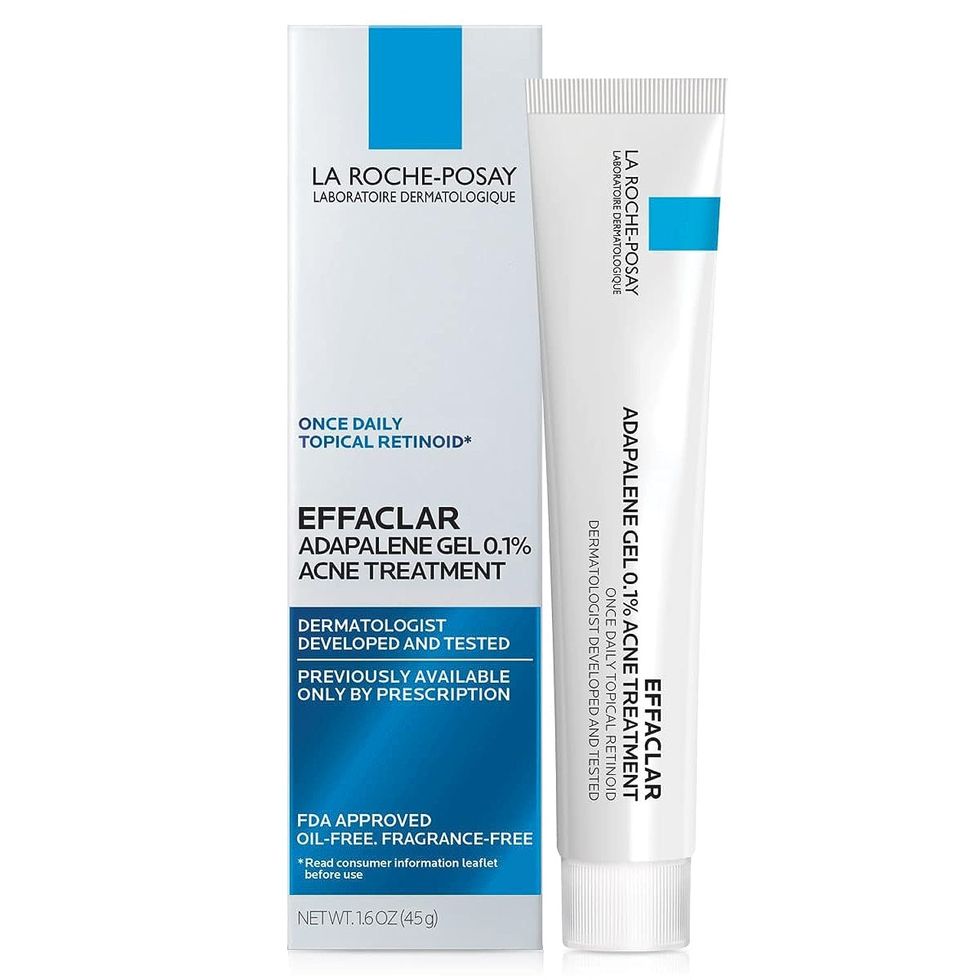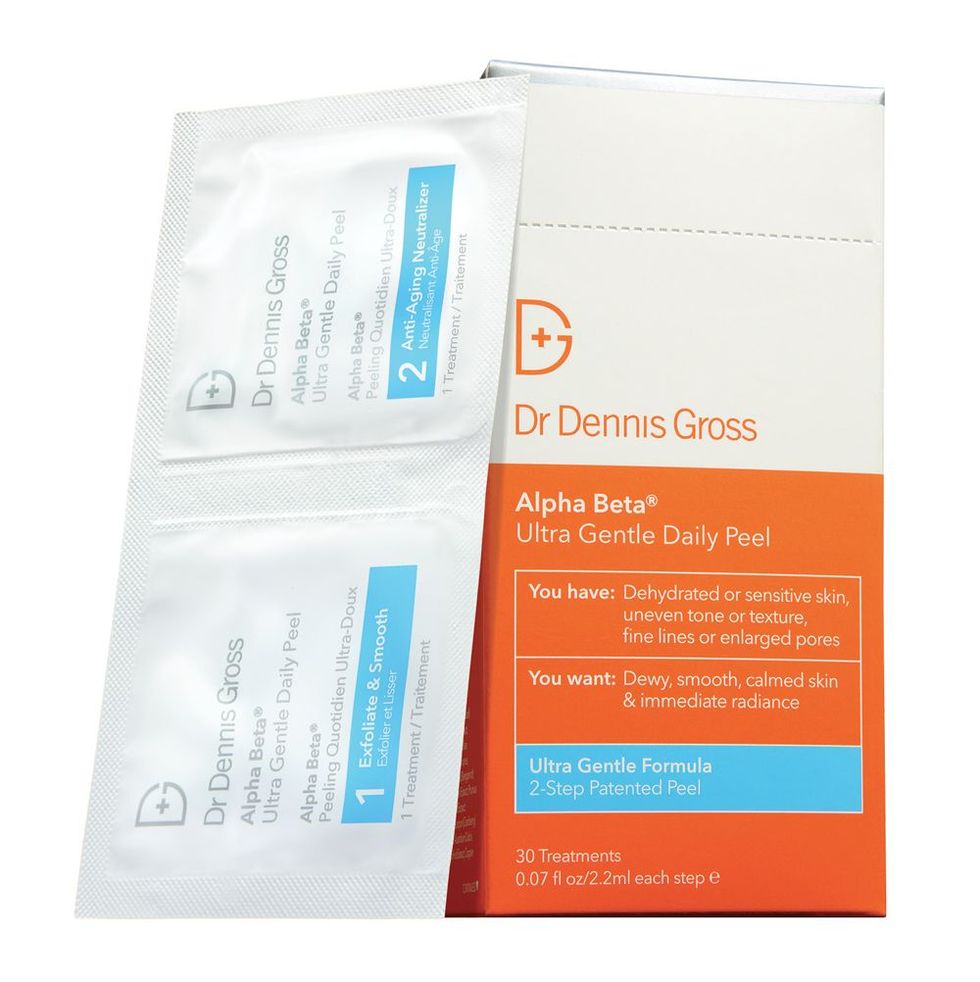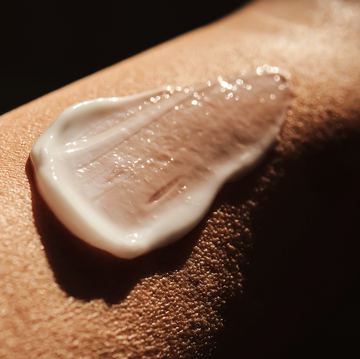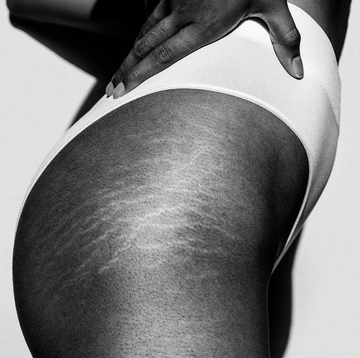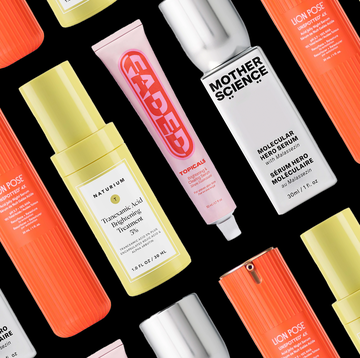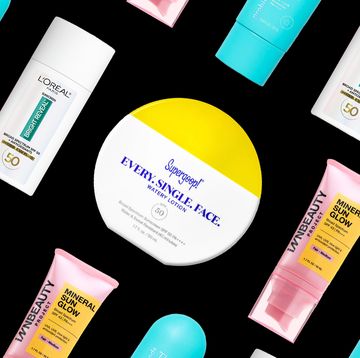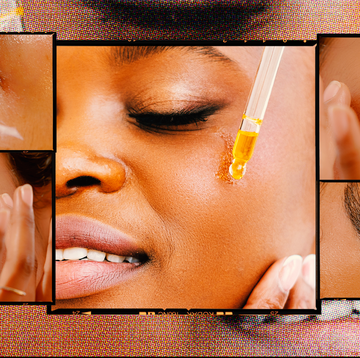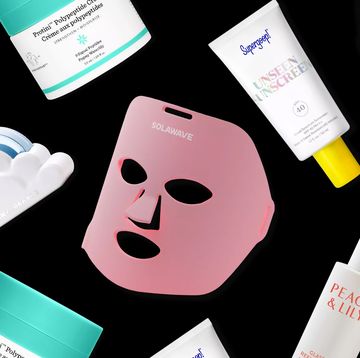I've dealt with nearly every type of hyperpigmentation over the years, including acne marks and scars and dark spots from UV exposure, but none have been tricker to deal with than melasma. Melasma is a form of hyperpigmentation that's not only triggered by a bunch of different things (we'll get into more of that later), it's a clinger. Meaning once you get it, it doesn't just magically go away on it's own, even if you throw a bunch of brightening ingredients at it. Melasma is also temperamental, so if you use too-harsh products or the wrong treatments to try and fade it, you can actually end up making your melasma worse. Yep, I know.
The only upside to my life of brown patches? I'm now a self-proclaimed melasma expert, and I've tested and reviewed virtually every melasma cream, brightening face serum, and professional treatment in existence. So pls allow me (and four trusted doctors) to tell you legit everything you need to know about getting rid of melasma, including the best products, prescriptions, and treatments to try at home and at the dermatologist's office. Finally, my skin problems have purpose.
Jump to:
What does melasma look like?
Unlike dark marks and spots or post-inflammatory hyperpigmentation (which both look like small spots in concentrated areas of the face), melasma is often widespread, appearing as brown or grayish, mask-like patches on the cheeks, bridge of nose, chin, forehead, and above upper lip, explains dermatologist Uchenna R. Okereke, MD.
Who can get melasma?
Anyone can get melasma, but it primarily affects women (90 percent of people with melasma are female, says Dr. Okereke) in their 20s, 30s, and 40s—so really, any adult woman can get it. That said, people with darker skin tones have more active melanin-producing cells in their body (melanin, FYI, is the thing that gives color to your skin, eyes, hair, etc.), making them more prone to melasma, says Dr. Okereke. There also the genetics thing: If your mom or grandma has or had melasma, chances are you could too. Womp womp.
What is melasma caused by?
"Melasma is caused when melanocytes—the cells that produce melanin in your skin—become overactive and produce an excessive amount of pigment," says Dr. Okereke. The overactivity can happen for any number of reasons (which is one of the reasons melasma is so hard to treat), but the two biggest causes are sun exposure and hormones, hence why you sometimes hear melasma referred to as a "sunstache" (sun!) or "pregnancy mask" (hormones!).
That means if you love to lay out, skimp on sunscreen, use hormonal birth control, or are pregnant, you're a prime candidate for developing melasma. Other triggers? Certain medications (so talk to your doctor), inflammation (from pollution, products, irritation, etc.), excessive heat (from things like hot yoga or hanging in the steam room), and an overly harsh or an aggressive skincare routine.
How do you get rid of melasma?
After years of trial and error (read: trying lots of products that either did absolutely nothing or fully sizzled my skin off), I've found that the best way to get rid of melasma is with a combo of at-home products and in-office treatments. As far as products go, a consistent routine of a melasma serum or cream with brightening ingredients plus a thick layer of mineral SPF in the morning, along with a retinol at night and the occasional chemical exfoliant is the best way to treat melasma at home. But be warned: You don't want to overdo it since inflammation can trigger melanocytes and end up worsening your melasma, says Dr. Okereke. That means chill with the derma-rollers/microneedlers and face scrubs and stick to these tried-and-true products, below, instead.
The 12 best at-home products for treating melasma:
Brightening serums and creams for melasma
They're going to do all the heavy lifting when it comes to fading your melasma. Look for a melasma serum or melasma cream (the texture is totally a personal choice) with vitamin C (ideally in the 10 to 20 percent range), tranexamic acid, azelaic acid, arbutin, kojic acid, and/or niacinamide. All of these ingredients help suppress excess pigment production while lightening melasma and evening out your skin tone—plus they're fairly gentle and safe for all skin tones unlike other skin brighteners (looking at you, hydroquinone) as well.
Sunscreens for melasma
You can use all the brightening products in the world, but without SPF? It's pointless, since UV exposure is basically a one-way ticket to melasma town. Choose a sunscreen that's got SPF 30 (at the very least) and is made with mineral or physical blockers, like zinc oxide and/or titanium dioxide.
"Chemical sunscreens only block UV light, but zinc sunscreens block all types of light, making them more effective at preventing melasma," says dermatologist Saya Obayan, MD. And, if you want to kick the protection up a notch, choose a sunscreen that also contains iron oxides. "They help block blue light from your computer and phone," she says, "and they also give you extra UVA protection."
As a rule, apply a nickel-size blob to your face before you head out the door in the morning and then reapply every two hours after that. I highly recommend stashing a powder sunscreen in your bag for easy, mess-free reapplication.
Retinols for melasma
So many people have asked me if retinol can clear up melasma, and the answer is 100 percent yes (this is especially true if you combine retinol with other brightening products). Retinol speeds up your cell's turnover rate, meaning they help push those damaged, pigmented skin cells to the surface (and then slough them off) to make room for fresh, new, and undamaged skin cells, says dermatologist Rachel Westbay, MD. The result? Skin that's less blotchy and more even-toned skin. There are even recent studies that show retinol is capable of reducing the skin’s capability of producing pigment, which can help clear up melasma as well, says Dr. Westbay.
There's a catch, though: Retinol can be irritating (which we know can end up making melasma worse), so start with a gentle retinol formula and use it slowly at first: One night a week for one week, two nights a week for two weeks, three nights a week for three weeks, then every other night indefinitely. But if your skin gets red or flaky, scale back your usage again until your skin has had time to adjust.
Chemical exfoliants for melasma
Chemical exfoliants refer to exfoliating acids, like AHAs, BHAs, and PHAs, says plastic surgeon Melissa Doft, MD. She previously told Cosmo that chemical exfoliants work by dissolving the bonds or the "glue" that holds together dead cells on the surface of your skin, which is key for brighter skin and less noticeable melasma. Not to mention, these exfoliating acids have major skin-smoothing benefits too.
The biggest thing to remember when incorporating chemical exfoliants into your routine is to not overdo it, says Dr. Doft. Using chemical exfoliants too often can weaken your skin's protective barrier, leading to things like inflammation, which we know is a trigger for melasma. Stick to just one exfoliating product at a time and use it as directed—and if you're using other strong actives, like retinoids or vitamin C, use your chemical exfoliant on alternating days/nights to avoid irritation.
What do doctors prescribe for melasma?
If your stubborn melasma isn't responding well to over-the-counter products, it's worth making an appointment with your doctor to talk through the different prescription options. Your derm may give you a compound custom cream that contains any number of different Rx-strength ingredients, like azelaic acid and arbutin, to help fade your melasma. Some derms may prescribe a cream with hydroquinone (a somewhat controversial, but very effective skin lightening ingredient) and others may prescribe Tri-Luma—a potent topical that combines hydrocortisone, hydroquinone, and tretinoin (aka Rx-strength retinol). Basically, your doctor will know what option is best for you.
If you can't make it to a derm IRL or don't want to go through insurance, Musely and Agency—two online providers of Rx-strength skincare—offer topical dark spot correcting formulas that can be customized to your specific skin type and tone to help fade melasma as well.
There's also oral tranexamic acid, which when taken in low doses for a short period can help suppress pigment production and clear up melasma. It's generally thought of a last-resort medication, so if you've exhausted all your options with zero success, oral tranexamic may be worth bringing up to your doctor.
What is the fastest way to get rid of melasma?
Bad news first: Skincare routines take time to work. Don't expect to slather on a bunch of products and suddenly be melasma free. Be patient with it—most routines take three to four months to yield visible results. Now for the good news: If you can't be patient and want your melasma gone ASAP (like for a wedding or special event), the fastest way to get rid of melasma is to head to the derm for one of the treatments below:
Pro chemical peel
Professional-strength chemical peels can help improve the superficial pigment associate with melasma, says Dr. Westbay, who recommends the medium-depth Jessner peel to her patients. "The Jessner peel traditionally features a mix of alpha and beta hydroxy acids in a specific ratio—14 percent of resorcinol, salicylic, and lactic acid—in an ethanol base." Most doctors find it to be safe in all skin tones when done correctly.
Other peel options for melasma worth talking to your doctor about? "Glycolic acid, trichloroacetic acid (this should be used with caution in darker skin tones due to higher complication rates), kojic acid, retinoic acid, and ascorbic acid, says Dr. Westbay. I've personally tried the VI Peel, which was effective at brightening my skin tone and reducing the appearance of melasma in my experience.
Sciton Halo laser
"The Sciton Halo— a dual wavelength fractional laser—is hands down my favorite laser for treating melasma, says Dr. Westbay." "Halo delivers two unique wavelengths into the same microscopic treatment zone, targeting both dermal and epidermal pigment, which is common in melasma sufferers." As an added benefit, it also stimulates collagen production for an impressive skin-tightening and pore-minimizing effect, says Dr. Westbay.
Clear and Brilliant laser
Melasma can be treated with the Clear and Brilliant’s Permea hand-piece, says Dr. Westbay, which exclusively treats epidermal melasma and is considered safe in all skin tones because it reduces the likelihood of inadvertent damage to pigment-producing cells that sit deeper in the skin. The treatment is mostly painless and requires little-to-no downtime, but multiple treatments are necessary to see a significant reduction in melasma. "Typically, patients will need five Clear and Brilliant laser treatments spaced about a month a part," says Dr. Westbay.
Microneedling
Unlike pigment-targeting lasers that work by zapping excess melanin in the skin, microneedling helps treat melasma by creating tiny wounds in the skin which triggers a healing response. That healing response turn prompts your cells to make to make brand-new, fresh skin that hasn’t yet experienced the effects of hormones and sun, explains Dr. Westbay. The tiny wounds or holes made in the skin during the microneedling process also allow doctors to funnel brightening ingredients—like tranexamic acid, glutathione, vitamin C, and niacinamide—into the skin to reduce excess pigment as well, says Dr. Westbay.
The final word:
Melasma can't really be "cured." It can fade on its own or in some cases it can linger for years, says Dr. Okereke. "If you're lucky enough to have your melasma clear up, it's still important to continue with maintenance therapy to prevent it from coming back." That means 1) wearing sunscreen religiously and a wide-brimmed hat or visor when you're spending time outside, 2) avoiding irritating skin care products, and 3) using a serum or topical with brightening ingredients. And, as someone who will probably be dealing with melasma to some extent for the rest of her life, trust me when I say you kinda, sorta, eventually get used to it. Silver linings?
Meet the experts:
- Uchenna R. Okereke, MD, is a board-certified dermatologist at in the greater Boston area. She specializes in skin of color and hair loss.
- Saya Obayan, MD, is a board-certified dermatologist at Skin Joy Dermatology in Austin, TX and the president of the Austin Dermatological Society.
- Rachel Westbay, MD, is a board-certified dermatologist at Marmur Medical in New York, NY and a clinical instructor at Mount Sinai hospital.
- Melissa Doft, MD, is a board-certified plastic surgeon at Doft Plastic Surgery in New York City who specializes in cosmetic and reconstructive treatments. Dr. Soft has previously spoken to Cosmo about chemical exfoliants for skin.
Why trust Cosmopolitan?
Lauren Balsamo is deputy beauty director at Cosmopolitan with a decade of experience researching, writing, and editing skincare stories that range from the best retinol eye creams to the best pore minimizing treatments. She’s an authority in all skincare categories but an expert when it comes to products and treatments for fading melasma. She regularly tests and analyzes new melasma serums, creams, and non-invasive melasma treatments for efficacy, while working with the industry’s top dermatologists and estheticians to assess new formulas and technologies.
Lauren Balsamo is deputy beauty director at Cosmopolitan, where she writes, edits, and produces all types of beauty content—from product reviews to personal essays and trend reports. She has covered beauty for nine years at Cosmopolitan and has contributed to Women’s Health and Seventeen magazines as well. Follow her on Instagram.
